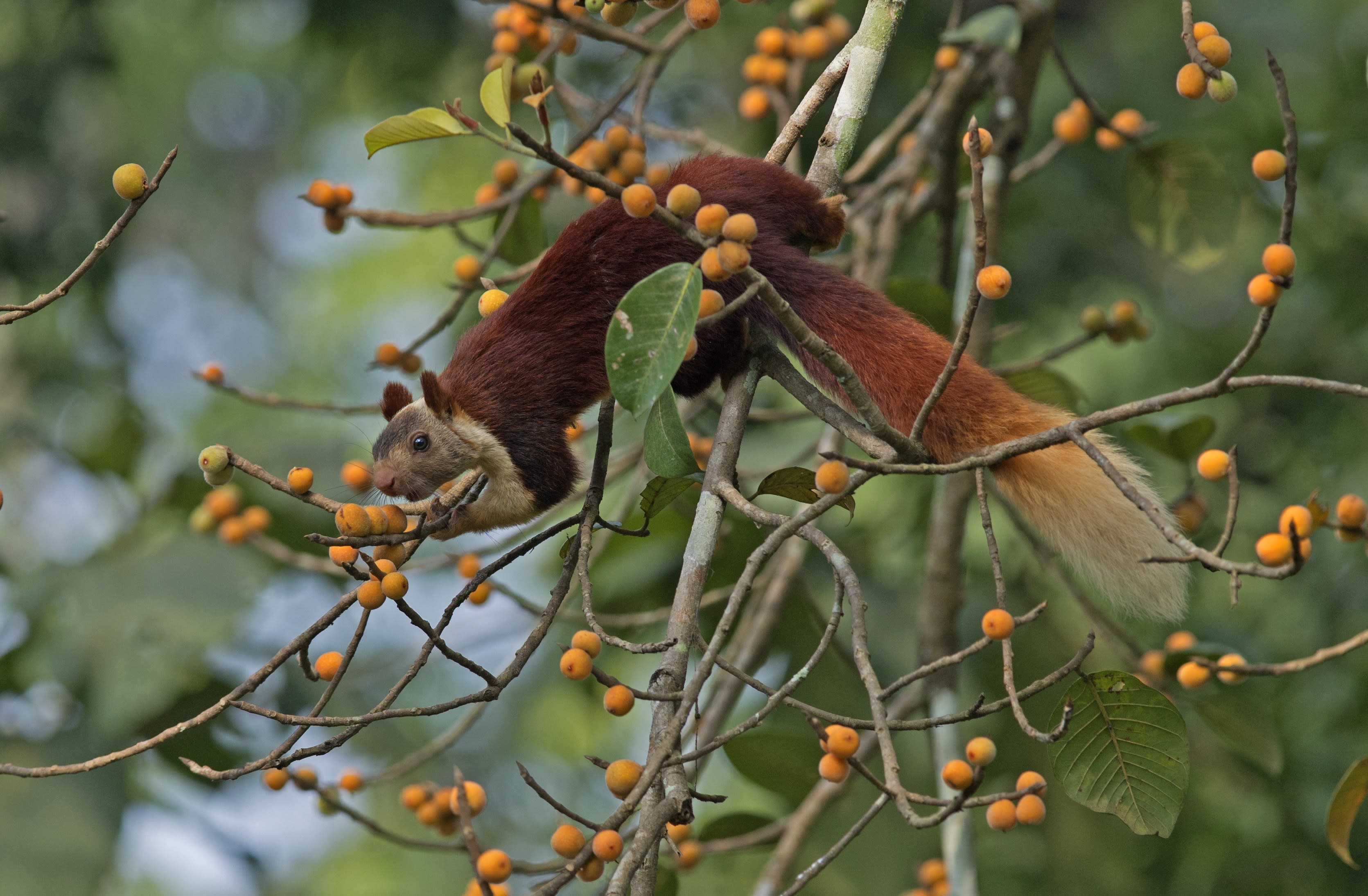 Listen to this article
•
15:34 min
Listen to this article
•
15:34 min
Walking along a forest trail, every 500 metres or so I heard the high-pitched, staccato chirrup of an Indian giant squirrel. I peered upward through the foliage to see if I could spot it, but only caught the briefest glimpse of a maroon and black coat through the dense canopy. These squirrels live high up on the branches of tall trees and only very rarely come down to the forest floor.

The path I was following was called ‘The Trekkers’ Trail’ which I’d taken from the Seethanadi Nature Camp near Someshwara Wildlife Sanctuary in Karnataka’s Udupi district. I’d started the hike to explore the forest, without any idea of how long the trail was or what I would see.
The park’s evergreen, semi-evergreen, and moist deciduous forests, covering an area of around 88 sq km, were afforded protection in 1974. In 2011, the area was expanded to around 314 sq km by adding Balehhali Reserve Forest, Agumbe State Forest, Someshwara Reserved Forest and Tombatlu Reserve Forest to the existing sanctuary. Today the sanctuary is part of a contiguous stretch of protected areas, which include the Mookambika Wildlife Sanctuary, Sharavathi Wildlife Sanctuary, and Kudremukh National Park. Someshwara Wildlife Sanctuary is named after the deity of the Someshwara temple located inside the sanctuary.
Blessed with a thick canopy, Someshwara has huge trees, with lianas hanging from many. The golum (Machililus macrantha) and balpale (Lophopetalum wightanium) trees, whose barks have medicinal properties, and the hebbalasu (Artocarpus hirsutus), prized for its durable timber, are some of the giants of this forest. Each tree has its own ecosystem. As I stood admiring a giant tree, with buttress roots twice my size, a forest lizard caught my eye, played hide-and-seek for a while, before finally posing for a photograph. Butterflies of various hues and sizes flitted along the trail. The monsoon was yet to arrive; the forest was dry, and the floor covered with leaf litter as far as the eye could see. Frogs, skinks, snakes, and insects were going about their daily lives, aided by the camouflage provided by the dry leaves. Trailing through the jungle, I paused occasionally to observe the theatrics played out between these often-overlooked residents of the forest floor.

My attention turned back to the overstorey as yet another Indian giant squirrel started calling out. A woodpecker also began calling shrilly, matching the squirrel note for note. A vocal duet was well and truly on in this forest.
After about two hours of walking, I reached an ill-maintained watchtower strategically constructed near a waterhole. I climbed up the metal stairs to get a different perspective of the forest from a height of about 20 m. The decision didn’t disappoint me at all as I watched a lizard fly by to land on a nearby tree. After announcing its arrival with utmost grace, the southern flying lizard (Draco dussumieri) proceeded to feed on an ant it spotted on the trunk. These lizards, popularly known as dracos, are common in this evergreen forest and are also seen in plantations bordering the forest.
Keen to see what else the forest would reveal, I decided to go explore a nearby dry pond that I had seen from my vantage point. It took me more than a minute to figure out that the creatures jumping around as I stepped on the pond bed’s leaf litter were in fact frogs. Smaller than the size of my thumbnail, they were bouncing off in every direction.

Another two hours had passed and it was past 2 pm. The sun was bearing down on me, but the signboards along the trail I needed to keep going. Soon a bend in the path led to the Sitanadi, which passes through the Agumbe forests and feeds several waterfalls in the region. I sat by the river for a while, watching it flow gently, before finding my way back to the trail, which now ran parallel to the river. It began raining then, and I imagined the frogs rejoicing in the dry pond I’d just visited.
Whoever had strategically placed the signboards along the trail had sadistically failed to mention how many kilometres long it was, or how much further the camp was from each signpost. I continued to trudge along. I noticed half-eaten fruits on the forest floor and wondered if they were dropped by the troop of Nilgiri langurs I had seen moments earlier making their way through the canopy. Late afternoons are usually when troops of these langurs, endemic to the Western Ghats, begin to head to their sleeping areas. It was soon early evening, but there was no sign of the camp.
I wondered if I had accidentally departed from the main trail and lost my way. But then I saw a temple and a bike parked near it and I knew I wasn’t too far away from the camp. Sure enough, in another 10 minutes, I was relieved to see a signboard that said ‘End of Trekkers’ Trail’.

Totally exhausted, I settled down on a large rock jutting out of the river, thankful to have spent an entire day in a little-known, under-explored forest. Someshwara’s charm lies in the fact that it is still off the trail of the wildlife tourist. There are no guaranteed wild animal or bird sightings, but if one is patient, the forest always reveals its secrets.










